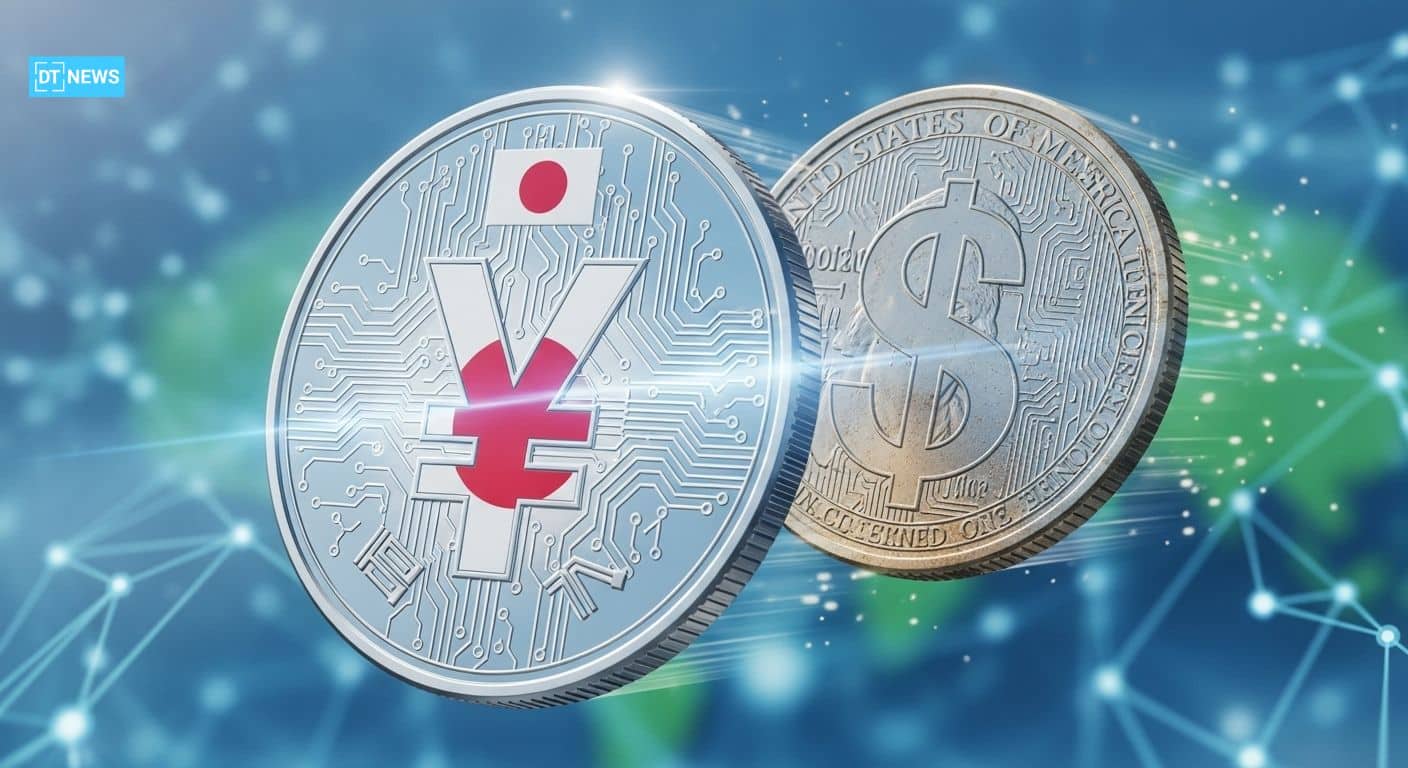This article was first published on Deythere.
Japan has officially entered the global stablecoin race with the launch of a yen-pegged stablecoin. The token, issued by Japanese fintech firm JPYC Corporation and backed by domestic deposits and Japanese government bonds (JGBs), sets it apart from other Asian currencies like the Korean won and Taiwan dollar, which face restrictions.
Based on reports, this yen stablecoin launch means Japan can use its freely convertible yen and deep financial markets for global blockchain-based settlement and payments.
What the Yen Stablecoin Means
Just recently, JPYC Corporation announced its stablecoin, called “JPYC”, which is 1:1 pegged to the Japanese yen and redeemable in yen according to the company.
The backing is through domestic bank deposits and JGBs. The company has waived initial transaction fees for the token and will generate revenue from interest earned on its JGB reserves.
The token is expected to launch on multiple blockchains including Ethereum, Polygon and Avalanche.
Japan’s stablecoin regulations have been evolving and this launch follows the Banking Services Agency’s 2023 framework that allows fully reserved stablecoins.
Why Japan’s Move Matters
The yen stablecoin launch is big in Asia because the yen is globally convertible, unlike the Korean won or Taiwan dollar which are limited offshore.
Reports claim more than 16% of global FX volume is USD/JPY, making it one of the most traded pairs in the world. As a result, market participants are hopeful that the a yen-pegged token could go beyond domestic payments.
Japan’s institutional depth in government bonds and its big financial sector gives the token a stronger foundation for global settlement ambitions. This could be the start of a digital yen ecosystem and a multi-currency stablecoin settlement environment in Asia.
Ecosystem Implications of the Yen Stablecoin
With the yen stablecoin , Japan is saying stablecoins can go beyond USD dominance and power cross-border settlement rails. The token’s backing model, deposits plus JGBs, is a credible reserve structure and its issuance on multiple chains means it can feed into DeFi, payments and institutional flows.
The presence of Japan’s major banks preparing to issue their own stablecoins means the ecosystem is ready. For global crypto markets, the yen stablecoin is a non-dollar collateralized token that can bridge Asian payment corridors and offer an alternative to dollar-pegged systems.
Asia and the Global Stablecoin Scope
Globally, dollar-pegged stablecoins dominate the market, over 99% of supply. In Asia, other countries have explored stablecoins (e.g., South Korea’s won-based token plans), but many face FX controls or limited convertibility.
The yen stablecoin launch is unique in targeting global circulation from day one. Japan now seems to appear at the forefront of stablecoin innovation in Asia and could be a hub for digital asset settlement and programmable money across the region.
Conclusion
This latest Japan’s yen stablecoin launch is an incredible feat for digital finance. With full backing in deposits and government bonds and the yen’s global convertibility, the token enters a crowded market of dollar-stablecoins with a strong competitive advantage.
For this to become a global settlement bridge or remains a domestic experiment will really hinge on adoption, execution and regulatory alignment.
But it should be noted, Japan has sent a signal: the era of multi-currency stablecoins has begun and the yen is in.
Glossary
Yen stablecoin: A digital token pegged to the Japanese yen; redeemable fiat-on-chain and backed by reserves.
Stablecoin: A digital asset pegged to a fiat currency or commodity, designed to maintain stable value.
Japanese government bonds (JGBs): Debt securities issued by Japan’s government, often used as low-risk holdings.
Convertibility: The ability of a currency or token to be exchanged freely into another currency or asset.
Pegged token: A digital token whose value is fixed relative to another currency; such as 1:1.
Multi-currency settlement: A system where transactions can occur across different currencies; typically via digital assets or layered infrastructure.
Frequently Asked Questions About Japanese Yen Stablecoin Launch
What’s different about Japan’s stablecoin compared to others in Asia?
It’s fully convertible offshore, backed by real deposits and JGBs and issued in a country with globally traded yen and deep financial markets.
Will the token have transaction fees?
No, initially. JPYC Corporation said it would waive transaction fees and earn revenue from interest on its reserves.
Can this stablecoin compete with U.S. dollar-pegged tokens?
The token has global ambitions and backing but widespread adoption and liquidity will be needed to compete with dominant dollar versions.
Does the stablecoin have backing in government bonds?
Yes. The reserves include JGBs and domestic deposits, according to the issuer.
What does this mean for cross-border payments in Asia?
With the yen stablecoin launch, Japan could offer a digital on-chain rail for USD/JPY pairs and Asian settlements, faster and cheaper transfers across borders via blockchain.



















































































































